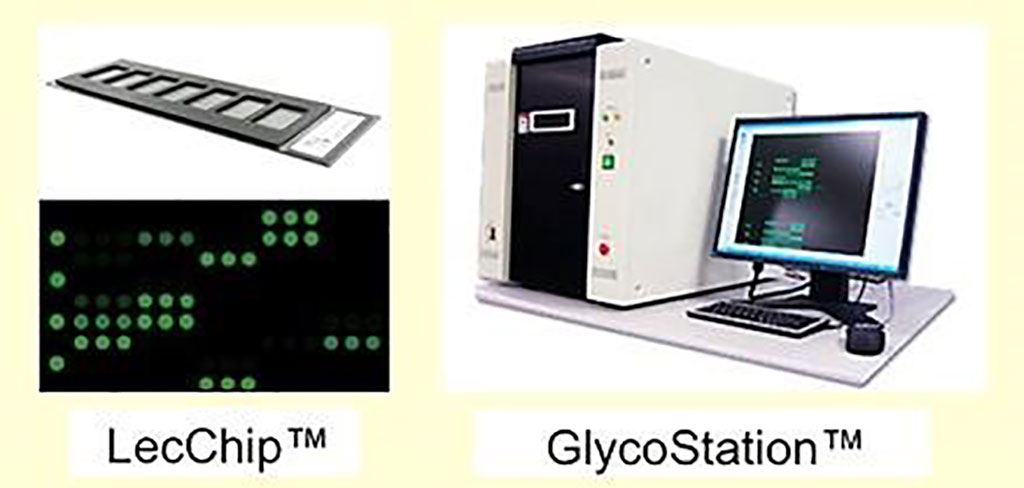Complex ABO Glycan Phenotypes Predicted by Lectin Microarrays
By LabMedica International staff writers
Posted on 16 Sep 2020
Serological classification of individuals as A, B, O, or AB is a mainstay of blood banking. ABO blood groups or ABH antigens, in addition to other surface glycans, act as unique red blood cell (RBC) signatures and direct immune responses. ABO subgroups present as weakened, mixed field, or unexpected reactivity with serological reagents, but specific designations remain complex. Posted on 16 Sep 2020
Lectins detect glycan motifs with some recognizing ABH antigens. Adaption of high-throughput microarrays spotted with a multitude of lectins, including lectins that recognize blood groups, may complement current methods for a more thorough interpretation of RBC ABH expression. Although many lectins have the ability to bind unique blood group antigens, few are tested for ABO-specific agglutination and, thus, limit their use in transfusion medicine.

Image: The LecChip and GlycoStation were used to identify subtle surface ABO blood group glycoprotein density variations (Photo courtesy of Glycotechnica).
Medical scientists at the Medical College of Wisconsin (Milwaukee, WI, USA) evaluated a 45-probe lectin microarray to rapidly analyze ABO blood groups and associated unique glycan signatures within complex biological samples on RBC surface glycoproteins. RBC membrane glycoproteins were prepared from donor RBCs, using 20 samples for each blood group. ABO blood group was distinguishable by lectin array, including variations in ABH antigen expression not observed with serology.
The total protein content from each extracted cell fraction was determined using the Micro BCA Protein Assay Kit (Thermo Fisher Scientific, Waltham, MA, USA). The LecChip (Glycotechnica, Yokohama, Japan) was chosen as a testing platform because it provided a wide selection of lectins compared with other commercially available microarrays. Fluorescent microarray images were acquired using the Glycotechnica evanescent-field fluorescence scanner, GlycoStation Reader 2200. Samples were applied in a grid format to the membrane PVDF membranes for immunoblotting.
The team used principal component analysis and highlighted broad ABO blood group clusters with unexpected high and low antigen expression and variations were confirmed with ABH antibody immunoblotting. Using a subset of lectins provided an accurate method to predict an ABO serological phenotype. Lectin microarray highlighted the importance of ABO localization on glycoproteins and glycolipids and pointed to increased glycocalyx complexity associated with the expression of A and B antigens including high mannose and branched polylactosamine. Thus, lectins identified subtle surface ABO blood group glycoprotein density variations not detected by routine serological methods.
The authors concluded that their study showed that ABH antigens on RBC glycoproteins were distinguishable by lectin array. Their analysis was limited to interrogating glycoproteins, but highlighted the importance of ABH localization on glycoproteins even within the same blood group. They identified changes associated with the expression of A and B antigens with increased levels of terminal and high mannose and branching polylactosamine. The study was published on August 21, 2020 in the journal Blood Advances.
Related Links:
Medical College of Wisconsin
Thermo Fisher Scientific
Glycotechnica













